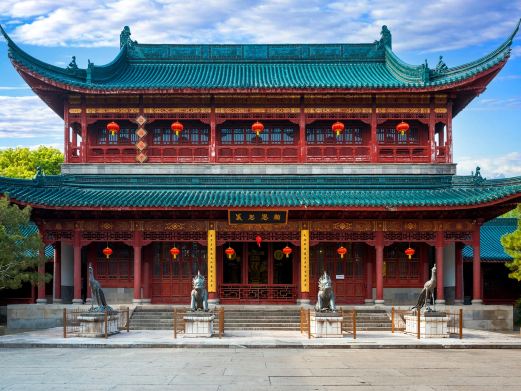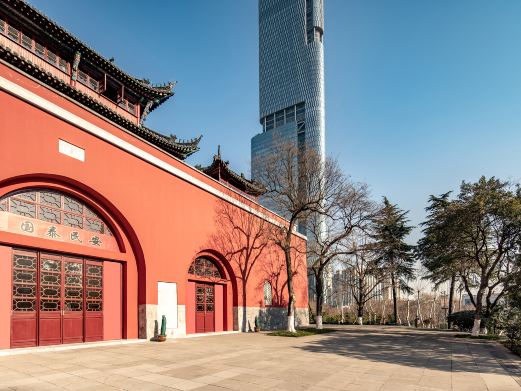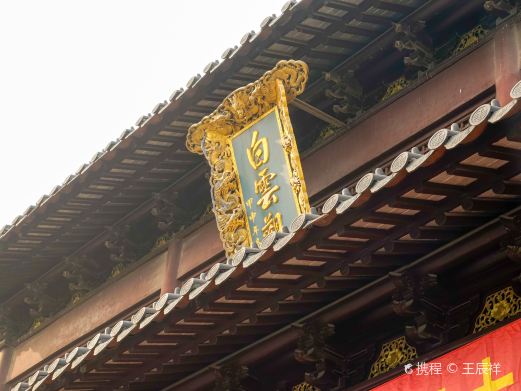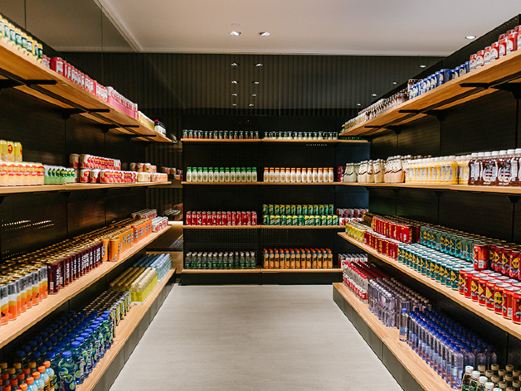Today’s Qibao Temple was relocated and rebuilt in 2002. It features Han and Tang architectural styles, simple and generous, solemn and majestic. Generally, it is divided into two parts: the temple and the garden, covering an area of 43 mu. There are Teaching Temple Bridge, main mountain gate, bell and drum towers, Heavenly King Hall, Mahavira Hall, scripture hall, dharma hall, sutra depository, sixty constellation corridors, and pagodas. In the east of the temple courtyard, there is a peony garden and a Treasure-gathering Lotus Pond. The peony garden has a peony pavilion. The Treasure-gathering Lotus Pond gathers the six treasure-casting copper sculptures of the town temple. The flying Buddha cast copper Buddha statue is now enshrined in the Flying Buddha Hall. There are galleries and poetry corridors around the Treasure-gathering Lotus Pond, which is called “Ancient Style Corridor”. In the west of the temple is Huixin Garden. In the garden, there are trees, green grass, and numerous flowers. There are also Tingsong Pavilion, Fengri Pavilion, and Sutra pillar platform. The Sutra pillar platform is exquisitely carved and has considerable ornamental value. In the original southwest corner is Leichan Cliff, including four scenic spots: “River Bridge Plank Road”, “Peach Blossoms on the Cliff”, “Isolated Mountain Cloud Terrace”, and “Chess Forest Wind and Clouds”. In front of the Heavenly King Hall is a square. Believers can burn incense and make offerings and make wishes on the square. The temple is located at the intersection of Puhuitang River and Hengli Jing River, presenting a unique scenery.
Opening hours: From January 1st to December 31st, 07:30 – 17:30.Qibao Teaching Temple
Today’s Qibao Temple was relocated and rebuilt in 2002. It features Han and Tang architectural[...]









